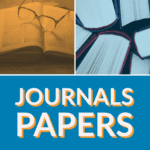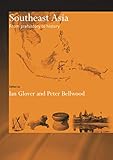Archaeology of Southeast Asia
To cite this page: Tan, Noel Hidalgo (2021, Updated 11 February 2023) Archaeology of Southeast Asia. Southeast Asian Archaeology. Available at: https://www.southeastasianarchaeology.com/southeastasia/
Overview
Archaeological evidence suggets that anatomically modern humans have been in what is now Laos and Malaysian Borneo from at least 60,000 and 40,000 years respectively. This fits in with the fact that humans reached Australia by around 50,000 years ago. Early populations in Southeast Asia lived a hunter-gatherer lifestyle; by 10,000 years ago, there was a widespread stone tool industry, the Hoabinhian, characterised by flaked tools made from cobbles. Population movements beginning around 4,000 BCE brought more people into Southeast Asia, likely from southern China. People speaking Austroasiatic languages spread overland into Mainland Southeast Asia, while people speaking Austronesian languages migrated into Island Southeast Asia via Taiwan. These new settlers brought with them new cultural practices such as rice agriculture, pottery and permanent settlements. From around 1,000 BCE bronze artifacts and metallurgy emerged, and iron started to appear around 500 BCE; early rice agriculture gave way to wet-rice cultivation and the first cities appeared.
During the transition to the common era, we see more evidence of inter-regional trade, such as the dispersal of pottery forms within Mainland Southeast Asia and nephrite earrings from Taiwan showing up in Philippines, East Malaysia, southern Vietnam, and peninsular Thailand dating from 500 BCE to 500 CE. Local trading networks extended to China and India. In particular, prolonged contacts with traders and ideas from India led to the eventual adoption of Indian writing, religion, culture and administration in emerging polities.
An important centre in this diffusion of culture from 300 BCE onwards was Funan in southern Cambodia and the lower Mekong. Funan was one of the earliest Indianized kingdoms of Southeast Asia. It is generally accepted that Funan (along with its successor Chenla) was the predecessor state to the Khmer Empire, which formed around the Mekong delta after the 5th century CE. Funan would be the first Indianized kingdom and was also a religious link between India and other Southeast Asian countries.
From the 5th century CE to the middle of the second millennium the region was dominated by various Hindu-Buddhist kingdoms such as Srivijaya, Majapahit in Island Southeast Asia; and Bagan, Champa and Angkor in Mainland Southeast Asia. These empires built many of the ancient temples that are considered archaeological treasures today. Over centuries these kingdoms created a large network of roads and trade routes which connected India to China. By the end of this period, Mainland Southeast Asia became predominantly Buddhist, while Island Southeast Asia became predominantly Muslim.
The fall of Malacca to the Portuguese in 1511 CE marked the beginning of the European era in Southeast Asia. By this time, trade goods from China and Southeast Asia were in such high demand in the west that European states sough to establish direct trade links with the source regions. With their arrival, they began to claim control over the region by asserting economic, if not also political, dominance over local kingdoms. Many kingdoms were either destroyed or co-opted into the European colonial control. The territories that make up the modern nation-states of Southeast Asia are part of this colonial legacy, reflecting the interests of the European powers rather than the traditional reach of the previous rulers.
European colonialism brought into the region the seeds of nationalism and the weakening of Europe after World War II led to the independence of the modern nation-states that we know today. Today, Southeast Asia remains a region of enormous cultural and geographical diversity. Shared historical and cultural experiences frequently transcend borders, which can be both a source of unity or division.
The scholarly discipline of archaeology has its roots in colonialism. Many archaeological artifacts were taken from Southeast Asia, often without permission or regard to their cultural significance, and can be found in museums and private collections around the world today. Archaeology in postcolonial Southeast Asia is inherently nationalistic and used to build a narrative to support the idea of the modern nation. In this regard, archaeological practice is regulated by the government through the ministries of culture (or equivalent), or through local universities and foreigners who wish to conduct archaeological work in Southeast Asia must ultimately do so with the cooperation and permission of the government.
Archaeology in Southeast Asia reflects an interconnected web of people, languages, kingdoms and trade networks that span from the Peripheral Areas of Southeast Asia to all across the modern region. It is one of the most exciting and vibrant regions to study the archaeology of the world, with a rich cultural history and the promise of discoveries yet to be made.
Recommended Books
The list below is my personal recommendation for broad overviews and source material about the archaeology of Southeast Asia, based on books that I have in my collection or sources that I use in my own research. Some of these links are affiliate links and I may receive a commission if you click on them and make a purchase. Besides books, this website contains many other digital research resources organised by themes or by country.
Latest Books
These books were released within the last two years. Some of these links are affiliate links and I may receive a commission if you click on them and make a purchase.
Popular Posts
These are the most visited posts from the site in the last month.
News Archive
The news reports indexed below usually link to external sites that were active at the time of posting; sometimes websites may be temporarily down or may have reorganised their underlying architecture or have even closed down – in these cases the links may not be available. Most of the news articles archived are in English; this is largely because I do not have a working competency in the other local languages, although when I am made aware of stories in other languages I try to index them.
Links to External Sites
These are links to external sites and unless stated, I have no connection with the organisations or entities in these links or control over their content. They are sorted alphabetically, but you should also explore the Resources page which have links sorted by themes. If you have a link to suggest, please get in touch!
- ASEAN – The Association of Southeast Asian Nations is a regional inter-governmental organisation promoting economic and political cooperation among the 10 member nation states.
- ASEAN Cultural Heritage Digital Archive – Digital collection of artefacts from countries in Southeast Asia (currently Thailand, Malaysia, Indonesia, Cambodia)
- Ecology Asia – Page about the vertebrate fauna of Southeast Asia
- H-SEASIA Discussion Network – H-SEASIA is a forum for discussion and communications regarding the history and study of Southeast Asia.
- ICCROM – International Centre for the Study of the Preservation and Restoration of Cultural Property.
- ICOM – The International Council of Museums.
- ICOMOS – non-governmental international organisation dedicated to the conservation of the world’s monuments and sites with national committees in Malaysia, Philippines, Singapore and Thailand.
- Indo-Pacific Prehistory Association – Founded in 1929, the IPPA is dedicated to the study of prehistory of Eastern Asia (70 deg longitude) and the pacific region.
- Institute for Southeast Asian Archaeology – ISEAA is a nonprofit organization, formed in late 2013, that builds upon a core of pioneering scholarship in Southeast Asian archaeology that began in the late 1960s at the Penn Museum.
- Southeast Asian Ministers of Education Organization (SEAMEO) – An intergovernmental organization based in Bangkok promoting cooperation in education, science and culture in the region. Two sub-centres deal specifically with culture:
- SEAMEO-SPAFA – The Regional Centre for Archaeology and Fine Arts, under the Southeast Asian Ministers of Education Organisation, based in Bangkok. [Disclosure: I work for SEAMEO SPAFA full-time as the Senior Specialist in Archaeology].
- SEAMEO-CHAT – The Regional Centre for History and Tradition under the Southeast Asian Ministers of Education Organisation, based in Yangon. (Facebook page.)
- UNESCO – The United Nations Educational, Scientific and Cultural Organization promotes international cooperation in education, science and culture.
- University of Oregon Southeast Asian Archaeology Lab – The Southeast Asian Archaeology lab dedicated to studying the archaeology of Southeast Asia, and especially the archaeology of the Angkorian civilization in Cambodia.
































































































